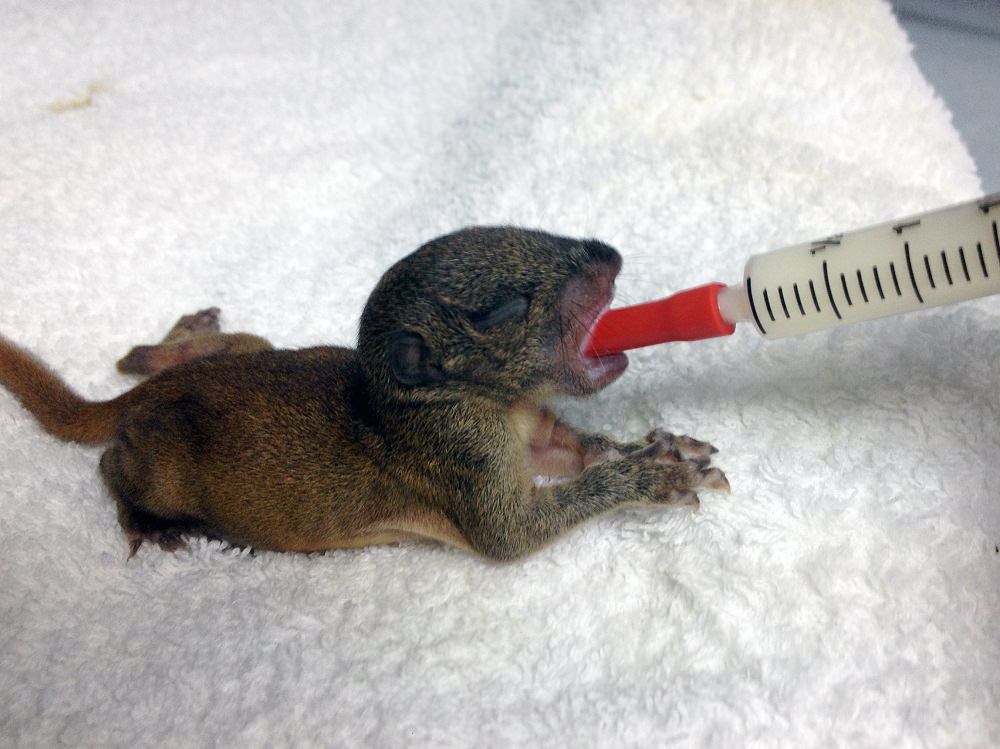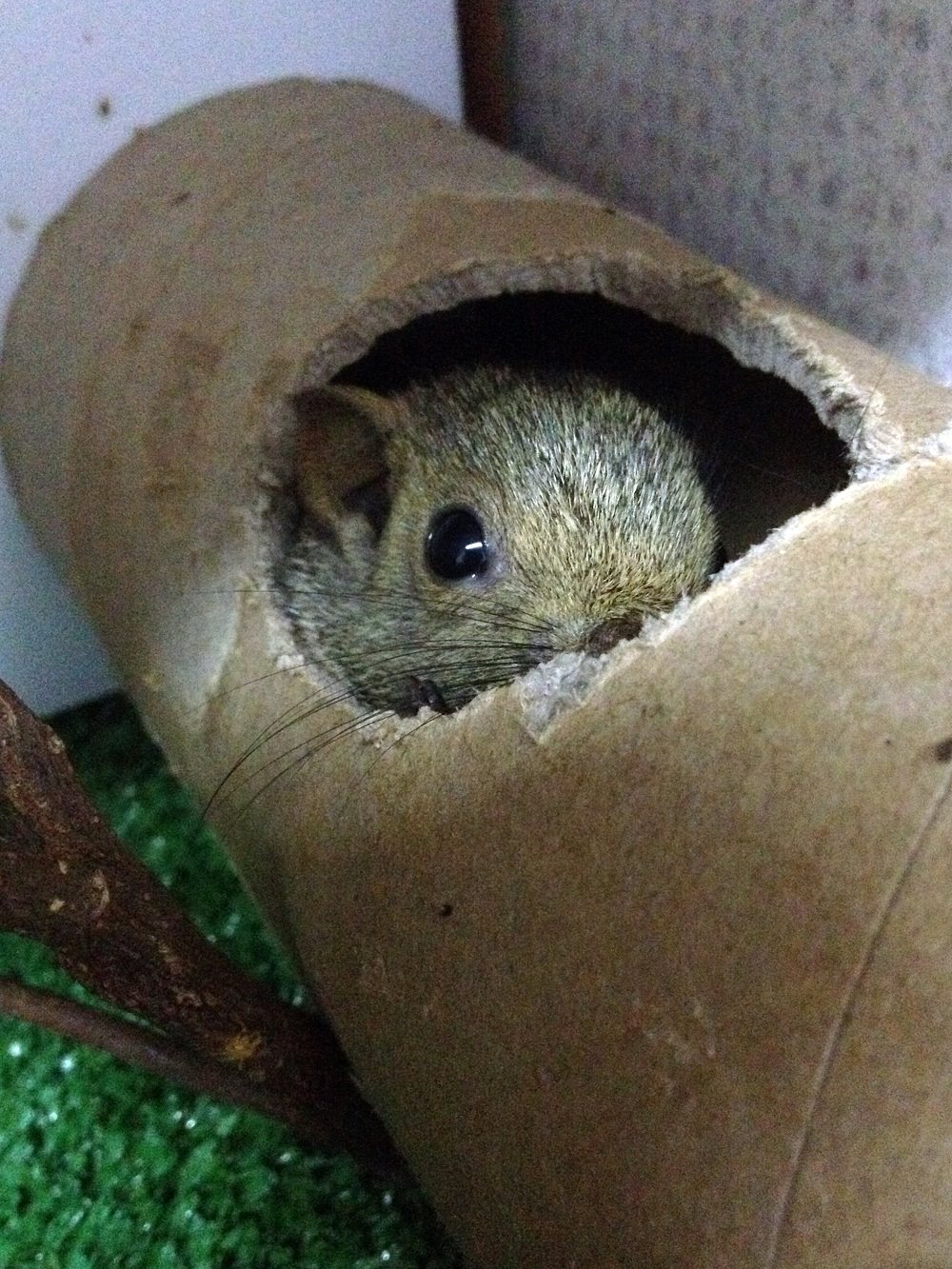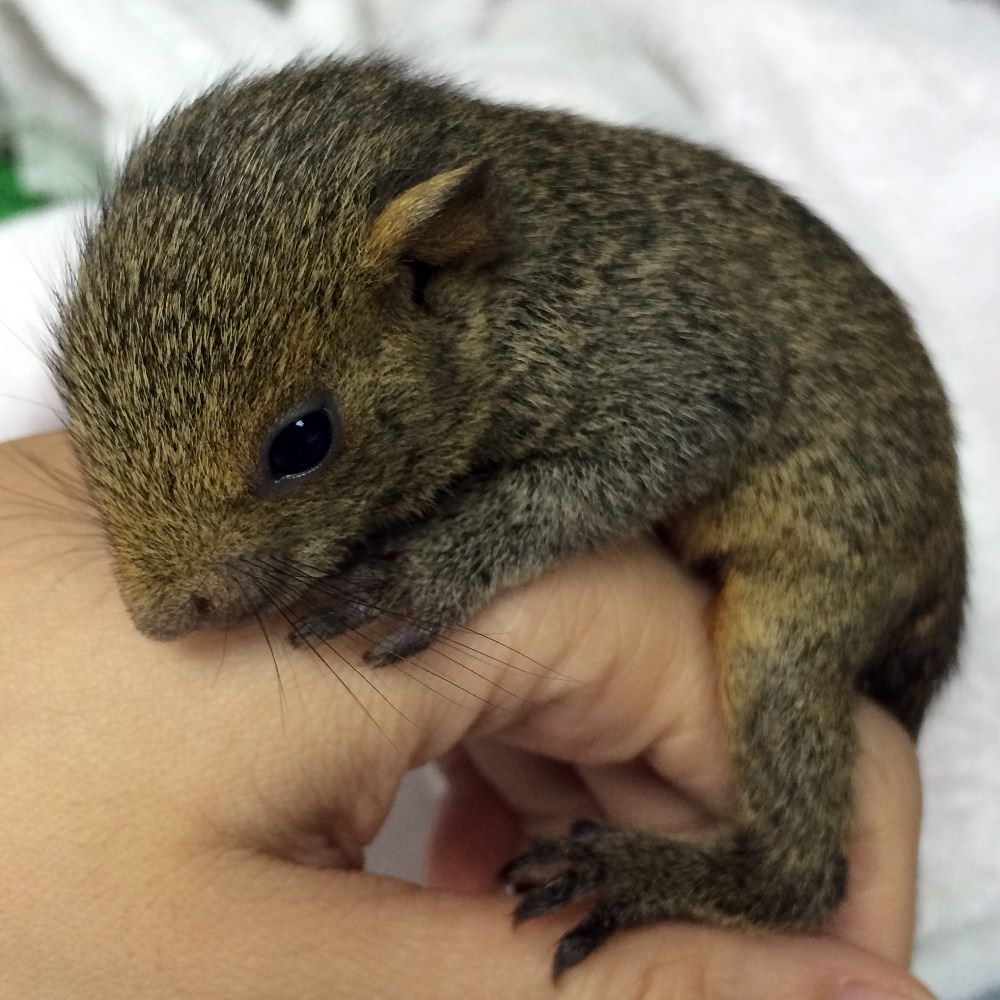Raising a baby Pallas’s Squirrel
A baby Pallas’s Squirrel was rescued by the SPCA in Wan Chai on 26 August 2015. It was passed to the Wild Animal Rescue Centre for veterinary care and rehabilitation. The squirrel was dehydrated and skinny but without any obvious injury. As it was a baby, the Rescue Team fed it with an animal milk supplement.

A syringe used to feed the baby squirrel
After two weeks on the milk diet, the squirrel was introduced to a solid diet consisting of a mixture of fruits, nuts, vegetables, and insects.

The squirrel can choose its favourite food from a wide choice provided.
From mid-September, as the squirrel grew it was moved to a larger indoor enclosure and then finally to a larger outdoor enclosure. The increase in enclosure size is to provide space for exercise prior to release. By the 30th September, the squirrel was deemed to be old enough for release back to the wild. When it arrived on 26 August, the animal weighted 40g and on the last weighing on 30 September it had reached 108g (nearly three times its initial size). The squirrel was released to the wild on Hong Kong Island on 9 October 2015.

A hiding area is provided for the squirrel
Did you know?
The Pallas’s Squirrel is not originally native to Hong Kong. It is an introduced exotic species. The first population may have come from abandoned or escaped pets that reproduced and established in Hong Kong to become part of the local wildlife. However, releasing exotic species may cause unpredictable consequences. Please do not release any of your pets or non-native animals.
Please report any injured or sick wild animals to the Agriculture Fisheries and Conservation Department (Hotline: 1823), SPCA (Hotline: 2711 1000) or the Rescue Centre at KFBG (Hotline: 2483 7200).
Animal Profile:
Though this squirrel looks cute it is a wild animal - please do not attempt to keep one as a pet.
Common Name: Pallas’s Squirrel
Scientific Name: Callosciurus erythraeus
Distribution in Hong Kong: Fairly widely distributed. The styani subspecies is found in the New Territories (e.g. Tai Lam, Shing Mun and Tai Po Kau), and the thai subspecies is found on the Hong Kong Island (e.g. Tai Tam and Pok Fu Lam).
Habitat: forest canopy and also reported in urban areas
Diet: leaves, flowers, fruits, seeds, nuts, pine cones and insects
Major Threats: There are no major threats to this species
Conservation Status: IUCN Red List: Least Concern; Protected by Wild Animals Protection Ordinance (Cap. 170) in Hong Kong

